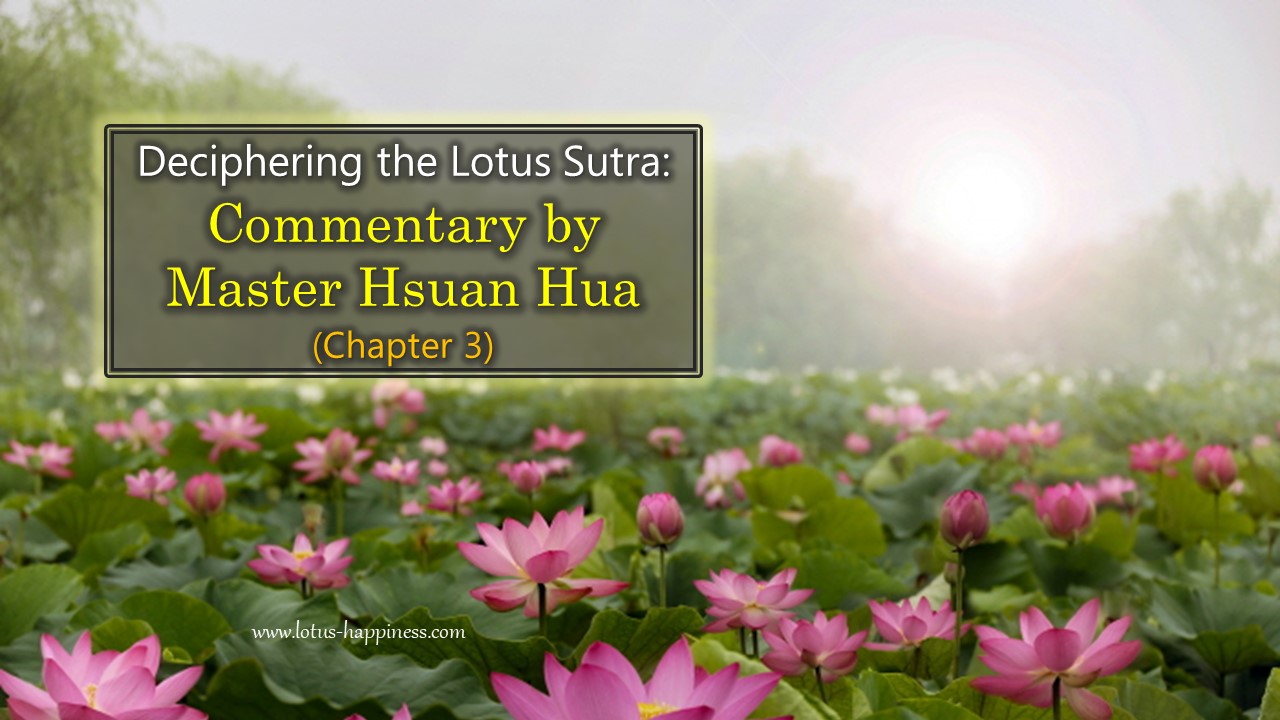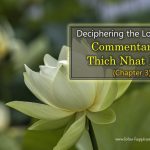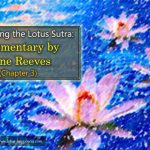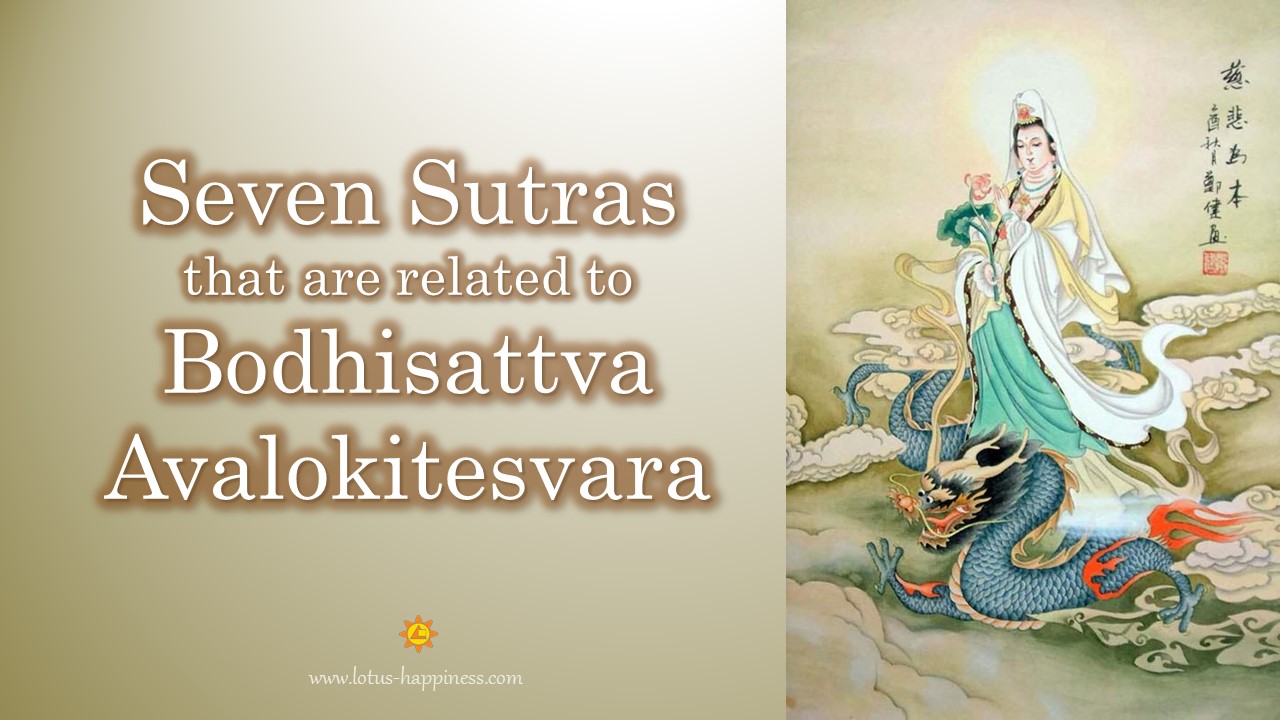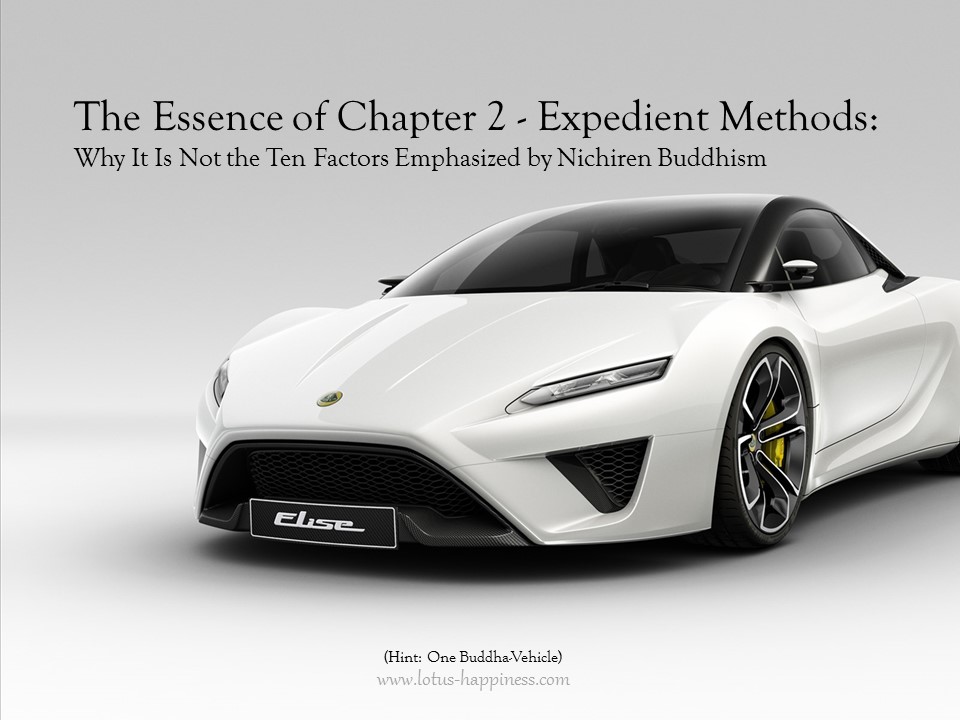Deciphering the Lotus Sutra: Commentary by Master Hsuan Hua (Chapter 3)
Sutra:
“Shariputra, in a future age, after limitless and boundless, inconceivable eons…”
Outline:
F4. Shariputra is given a prediction.
G1. Prose.
H1. Time.
Commentary:
Shariputra, in a future age, after limitless and boundless, inconceivable eons. I am now conferring a prediction upon you to the effect that, after a number of eons which is infinite and boundless, which cannot be conceived of with the mind or expressed in words.
Sutra:
“…having made offerings to some thousands of myriads of kotis of Buddhas, having reverently upheld the Proper Dharma, and having perfected the Path practiced by the Bodhisattvas…”
Outline:
H2. Causal practices.
Commentary:
Having made offerings to some. “Some,” here, refers to a number that is uncountable. The exact figure is not known, but in general, Shariputra made offerings to a great many Buddhas–several thousands of myriads of kotis of Buddhas–who knows how many? Having reverently upheld the Proper Dharma. You will have most reverently practiced the Proper Dharma, not the deviant dharma.
And having perfected the Path practiced by the Bodhisattvas. Having completed the practices essential to Bodhisattvas, the Six Perfections and the Ten Thousand Practices.
Sutra:
“…you shall become a Buddha by the name of Flower Light Thus Come One, One Worthy of Offerings, One of Proper and Universal Knowledge, One Whose Understanding and Conduct Are Complete, a Well-gone One Who Understands the World, an Unsurpassed Knight, a Taming and Regulating Hero, a Teacher of Gods and Humans, a Buddha, a World Honored One.”
Outline:
H3. Attainment of the fruition.
Commentary:
You shall become a Buddha by the name of Flower Light Thus come One. Here, we are give the list of the Buddha’s ten titles. The first is “Thus Come One.” The Buddha, the Thus Come One, “takes the Vehicle of the Way which is ‘ Thus’ to ‘Come’ to the realization of Proper Enlightenment.”
The Way which is “ Thus” is the real, substantial Buddha Way, the path of the realization of Buddhahood. The path of the realization of Buddhahood is most certainly not an illusion; it is real and substantial. Therefore, an explanation of the term “Thus Come One” is that the Buddha takes the Vehicle of the Way which is “Thus” to “Come” to the realization of Proper Enlightenment, that is, Buddhahood.
One of the best explanations of the term Thus Come One, however, is found in the Vajra Sutra. It says, “The Tathagata does not come from anywhere, nor does he go anywhere. Therefore, he is called the Tathagata.” The Tathagata, or Thus Come One, neither comes nor goes.
“Thus” also represents stillness. “Come” represents movement. Movement does not obstruct stillness; stillness does not obstruct movement. Movement itself is stillness and stillness itself is movement. Movement and stillness are of one “ Thusness.”
Why is there movement? Movement is manifest through stillness. Why is there stillness? Stillness appears out of movement. Stillness is produced from movement. Movement comes from stillness. That is why movement and stillness are of one “ Thusness.” They are dual and yet non-dual. Although they are two, they are one. They are like water and ice. Water is ice and ice is water. The principle is the same. So, movement does not obstruct stillness and stillness does not obstruct movement. Stillness, at its extreme point, becomes movement and movement at its extreme point turns into stillness.
We human beings move during the day and are still at night. However, sometimes during the time of stillness people move. Sometimes, during the time of movement, people are still. For instance, during the day, people are suppose to be on the move, but some of them may take naps. Sleeping is stillness and waking is movement. At night, one should sleep, but some people do not. That is movement.
Thus Come One, then, is the first of the Buddha’s ten titles.
The second title is One Worthy of Offerings. One ought to make offerings to the Buddha. Living beings should make offerings to the Buddha, the Dharma, and the Sangha. On the part of the Buddha, the Buddha is worthy and should rightfully receive the offerings of gods and humans. It is said, “Where there is seeking, there will be a response. There is no influence that does not come through.” When you make offerings, you do so because you are seeking something. You seek blessings and wisdom, and therefore, you make offerings to the Triple Jewel.
The third of the Buddha’s ten titles is One of Proper and Universal Knowledge. What is meant by “Proper Knowledge?” It means that one knows that the mind produces the ten thousand dharmas. “ Universal Knowledge” means that one knows that the ten thousand dharmas are only the mind. All dharmas come from the mind:
The Buddha spoke all dharmas, for the minds of living beings.
If there were no minds, what use would dharmas be?
The fourth title is One Whose Understanding and Conduct are Complete. “Understanding” refers to the light of wisdom. “Conduct” refers to his cultivation. Because the Buddha is replete with wisdom, he is said to be complete in understanding and conduct.
Fifthly, the Buddha is the a Well-gone One Who Understands the World. “Well” means good. “Gone” means that he has gone to a good place. He understands and is clear about everything in the world. There are no dharmas, either mundane or transcendental, which he does not understand.
His sixth title is that of an Unsurpassed Knight. Only the Buddha can be called the Unsurpassed Knight. Other living beings cannot. Bodhisattvas are called Great Knights. They also have the name, Surpassed Knights. But the Buddha is the Unsurpassed Knight. No one is higher than the Buddha.
A Taming and Regulating Hero: To steer a car, you have to turn the steering wheel. In northern China, they have horse carts. The driver cracks the whip and they go forward. This is just “regulating.” The Buddha is a great hero who tames and regulates those in the Three Realms: the Desire Realm, the Form Realm, and the Formless Realm.
A Teacher of Gods and Humans: the Buddha is a leader for both the gods in the heavens and the people on the earth. The Buddha has three meanings, “Self-enlightened,” “Enlightening Others,” and “ Complete in Enlightenment and Practice.” It is said,
Having perfected the Three Kinds of Enlightenment,
And replete with the ten thousand virtues,
He is therefore called “ the Buddha.”
A World Honored One means that the Buddha is honored both in and beyond the world.
Source: CTTB

